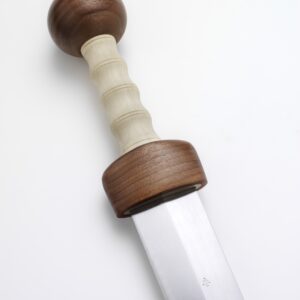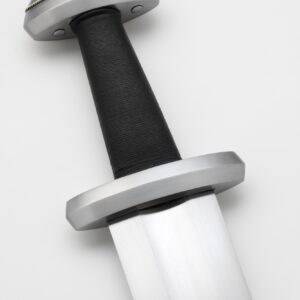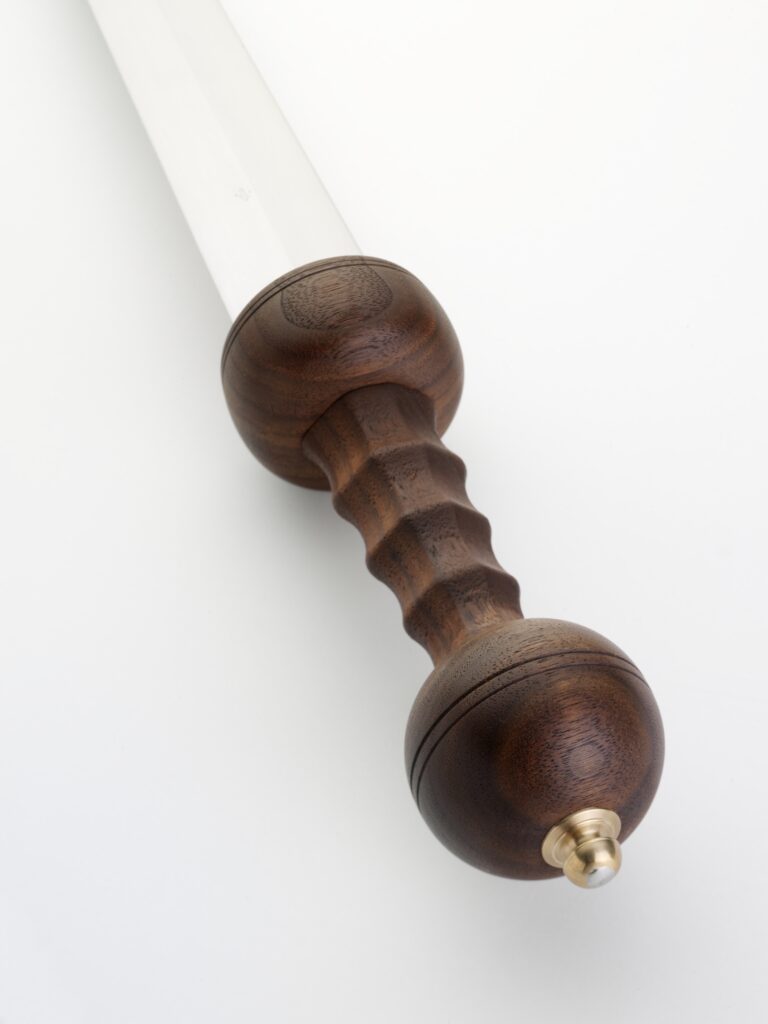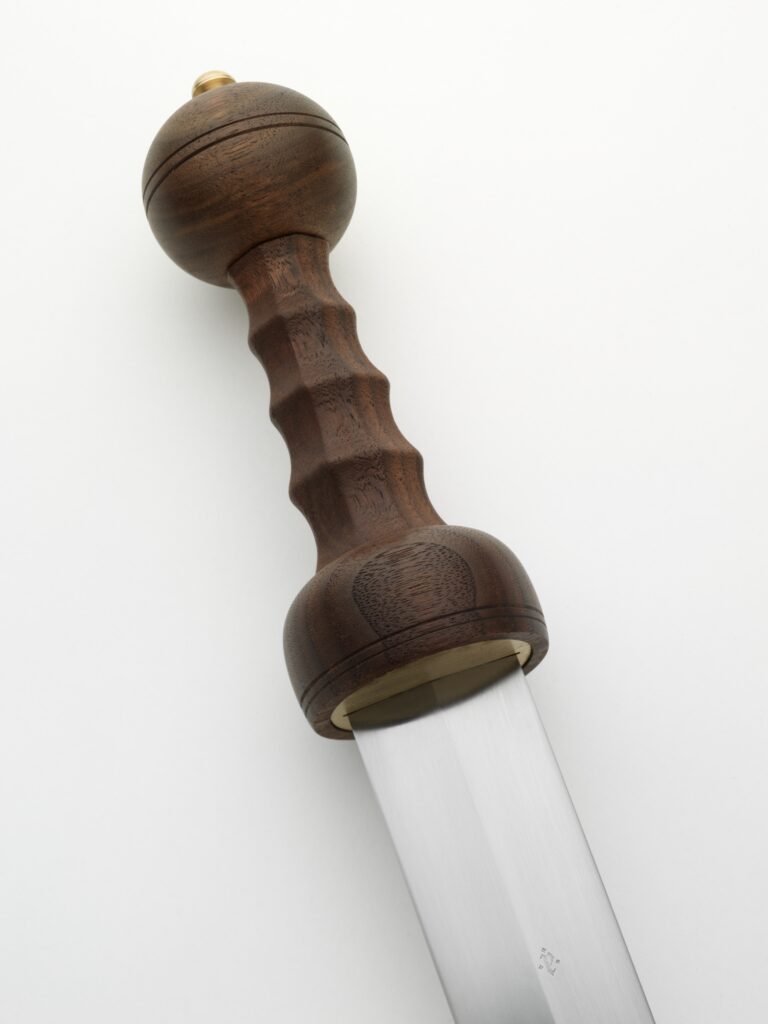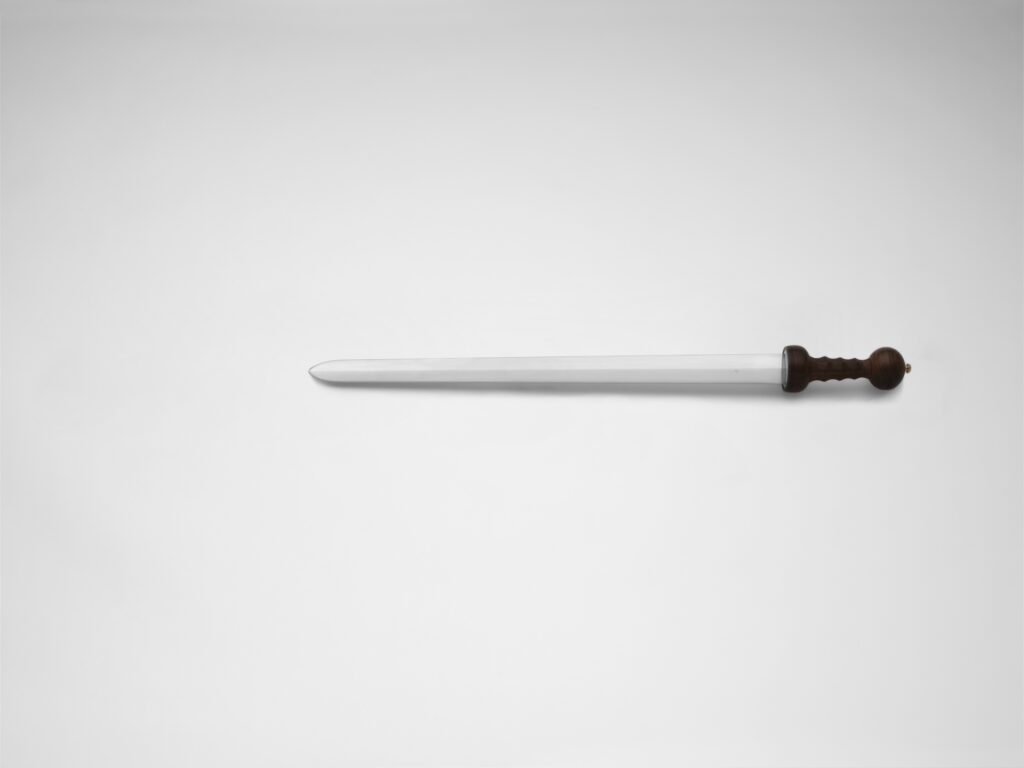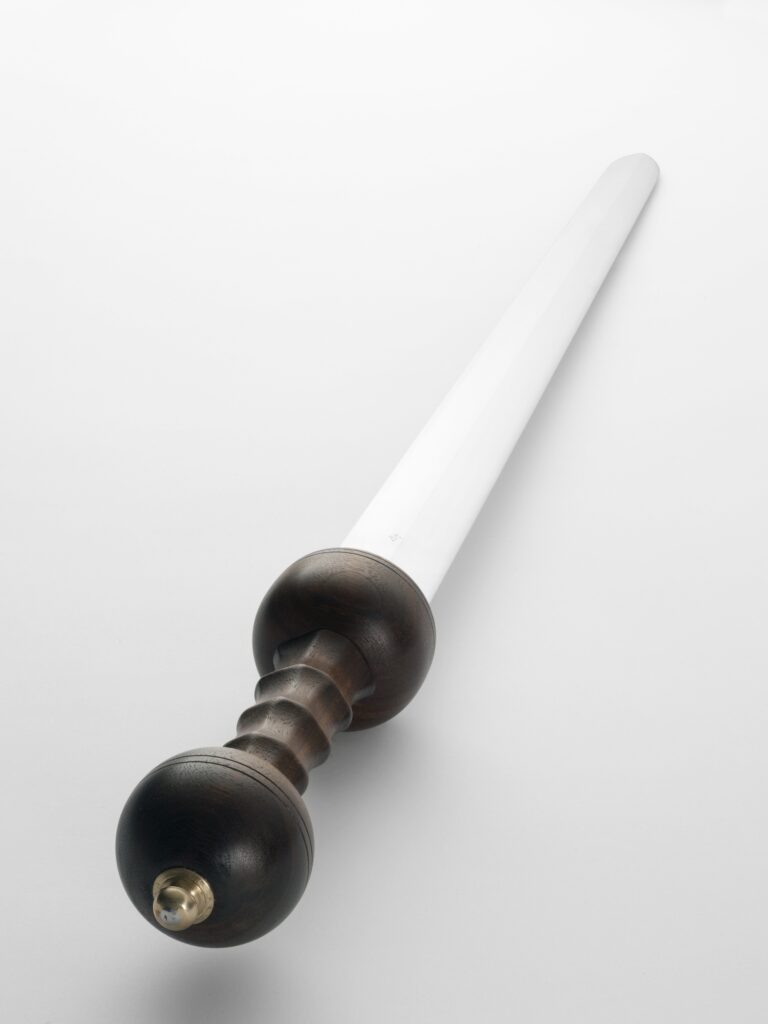(Roman Spatha)
The spatha, or long sword, was originally the weapon of the Roman cavalry units. Longer than the infantry gladius, it gave the reach and cutting power needed from horseback. In the 3rd and 4th centuries, the spatha gradually replaced the gladius as the infantry sword, probably due to the large numbers of Celtic/Germanic recruits that then populated the legions in the late Empire.
The spatha is also credited with being the inspiration for the development of the Migration era sword styles — in fact, in many bog finds it is difficult to determine which swords are late Roman spathae and which are native Germanic swords.
The Auxilia spatha represents an early form of the long slashing cavalry weapon. The blade is a Straubing-Nydam type, of the Newstead variant. Typically these were of moderate length, medium width and a diamond section with a point shape like a narrow gothic arch. This kind of blade was in used from the early years of the 1st C AD until the first half of the 3rd C AD.
Two blades found in Newstead, Scotland (dated to the early 1st C AD) gave name to the sub group. Both blades are slim with a diamond section and an elegant spade shaped point; one blade is slightly smaller than the other.
Another famous example of this type of sword is popularly known as the Köln spatha (although this blade has a lenticular instead of diamond section). This late example from the third century shows that this form of the roman cavalry sword was used virtually unchanged during more than two centuries.
Our Auxilia has a comfortable heft that balances liveliness with hitting power. Overall weight is low and the distribution of mass results in a soft forward pull that helps direct the edge during a cut. It is easy to understand why swords such as these were essential weapons for the Roman cavalry man.
The hilt is an all wood construction, with a reinforcing guard plate of bronze inleted into the forward end of the guard, and a mushroom shaped rivet block. The guard and pommel are hand turned after the example of surviving specimens. The grip has an eight sided cross section with finger groves that provides a firm purchase and a clear indication of the direction of the edge. The seemingly simple shape of roman sword hilts is an ingenious design, where the components and their form are reduced to the essential minimum, while expressing a stark elegance.
We chose to use one single kind of wood for all components of the hilt, as would often have been the case in Roman times. The walnut wood is given a 24 hr soak in linseed oil, left to harden over 48 hours and then polished on a cloth wheel. This treatment helps to seal the wood against moisture and gives a soft satin sheen that deepens the natural colors.
Specifications
Overall length: 35.75” (90.8 cm)
Blade length: 27.5” (69.9 cm)
Blade width: 1.625” (4.1 cm)
CoP: 19” (48.3 cm)
CoB: 4.125″ (10.48 cm)
Weight: 1lb 13oz (840g)
This sword is offered in a limited edition of only 500 collectible swords worldwide.
